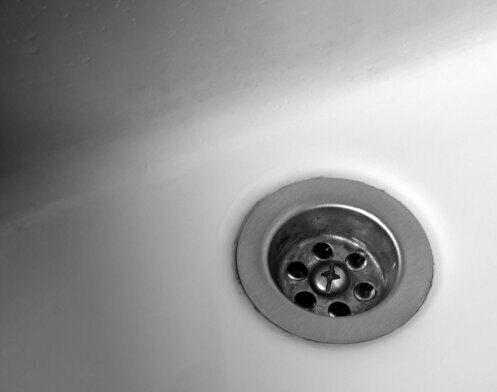What Is a Backflow Device and Why Is It Important
Backflow prevention devices are essential to plumbing systems in buildings and facilities. They are designed to prevent the backflow of contaminated water from entering a clean water supply system, which can cause serious health hazards. This article will explore what backflow prevention devices are and why they are important.
What Is Backflow?
Backflow is the reverse flow of water from its intended direction in a plumbing system. This can occur when the water pressure in the plumbing system is disrupted, causing water to flow in the opposite direction than intended. This reversal of water flow can create a siphoning effect, drawing contaminated water back into the clean water supply.
There are several causes of backflow in plumbing systems, including:
- Sudden drop in water pressure: A sudden drop in water pressure can create a vacuum that sucks water back into the plumbing system from a contaminated source.
- Back siphonage: This occurs when there is a negative pressure in the plumbing system, causing water to flow in the opposite direction than intended.
- Cross-connection: A cross-connection occurs when a contaminated source is connected to the clean water supply. For example, a garden hose connected to a contaminated source can backflow into the clean water supply.
- System maintenance and repairs: Maintenance and repairs on plumbing systems can create a temporary disruption in water flow, leading to backflow.
- Water main breaks: Water main breaks can cause a sudden drop in water pressure, leading to backflow.
It is essential to understand these causes of backflow to prevent contamination of the clean water supply. Installing backflow prevention devices is the most effective way to prevent backflow from occurring.
What Is a Backflow Prevention Device?
A backflow prevention device is a mechanical device installed in a plumbing system to prevent backflow. The device works by allowing water to flow in only one direction, from the clean water supply to the building or facility, and prevents water from flowing back in the opposite direction.
There are several types of backflow prevention devices available, including check valves, pressure vacuum breakers, and reduced pressure zone devices. Each type of device is designed for specific applications, depending on the degree of hazard present in the plumbing system.
Check Valves
Check valves are an essential type of backflow prevention device that works by allowing water to flow in one direction only. This means water can enter the system but not flow back into the clean water supply. Check valves are the simplest type of backflow prevention device, and they are typically used in low-risk applications, such as residential plumbing systems, irrigation systems, and fire sprinkler systems.
The simplicity of check valves makes them easy to install and maintain. They consist of a disk or a ball that opens and closes depending on the direction of water flow. When the water flows in the desired direction, the valve opens, allowing water to pass through. The valve closes when the water tries to flow in the opposite direction, preventing backflow.
Despite their simplicity, check valves are unsuitable for high-hazard applications because they cannot provide the protection needed to prevent backflow in such systems. High-hazard applications require more advanced backflow prevention devices, such as reduced pressure zone (RPZ) devices, double-check valve assemblies, and pressure vacuum breakers (PVBs).
Pressure Vacuum Breakers
Pressure vacuum breakers (PVBs) are another type of backflow prevention device commonly used in irrigation systems and outdoor water faucets. They work by creating an air gap between the water supply and the potential source of contamination, which prevents backflow from occurring.
Reduced Pressure Zone Devices
Reduced pressure zone (RPZ) devices are the most commonly used type of backflow prevention device and are designed for high-hazard applications such as hospitals, laboratories, and industrial facilities. They use a series of valves to create a zone of reduced pressure that prevents contaminated water from flowing back into the clean water supply.
Double-Check Valves and Atmospheric Vacuum Breakers
Other types of backflow prevention devices include double-check valve assemblies, commonly used in commercial and industrial applications, and atmospheric vacuum breakers, typically used in low-hazard applications such as residential irrigation systems.
It is important to note that selecting the appropriate type of backflow prevention device depends on several factors, including the degree of hazard present in the plumbing system, the local plumbing codes and regulations, and the specific application of the device. It is crucial to consult with a certified plumber or backflow prevention specialist to determine the appropriate type of device for a particular plumbing system.
Why Is Backflow Prevention Important?
Backflow prevention is critical to maintaining a safe and healthy water supply. Without backflow prevention devices, contaminated water could enter the clean water supply, posing a serious health risk to individuals who use the water. Contaminated water can contain harmful bacteria, viruses, chemicals, and other contaminants that can cause illness or disease.
In addition to the health and safety concerns, backflow incidents can lead to significant economic losses due to the required cleanup and remediation. These incidents can also result in legal liability if they cause harm to individuals or property.
Regular maintenance and testing of backflow prevention devices are necessary to ensure they function correctly. This includes annual testing and certification by a certified backflow prevention tester to ensure that the devices are working correctly and comply with local and national plumbing codes.
Building owners and managers must understand the importance of backflow prevention devices, comply with plumbing codes, and maintain them to avoid health hazards, legal liabilities, and economic losses. Consulting with certified professionals is necessary to determine the right device for a particular plumbing system.
Crystal Blue Plumbing, Heating & Air is a family-owned and operated HVAC and plumbing contractor that has proudly served Sacramento, CA, and the surrounding areas for over four decades. We treat our employees and customers like family and aim to build long-lasting relationships with everyone we work with.
We take pride in being more than just a quick fix for plumbing and HVAC issues. We aim to be a reliable partner for our customers, providing exceptional plumbing, heating, air conditioning, and ventilation services for life. Since our inception, we have been dedicated to providing exceptional customer service, harking back to when customer service was personal and meaningful.
At Crystal Blue Plumbing, Heating & Air, we prioritize building trust with our customers through our quality workmanship, customer-focused approach, and dedication to their satisfaction. We strive to maintain our reputation as a contractor that offers more than just quick repairs but a lifelong partnership built on mutual respect and trust.
If you want to learn more about backflow devices, our professionals can help. We also offer comprehensive heating, cooling, and plumbing services and indoor air quality solutions to residents and business owners of Sacramento, CA, and surrounding communities. To learn more about our services or to schedule an appointment with one of our team members, contact Crystal Blue Plumbing, Heating & Air today.








